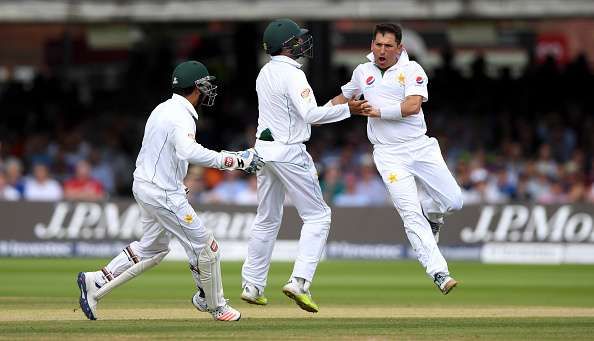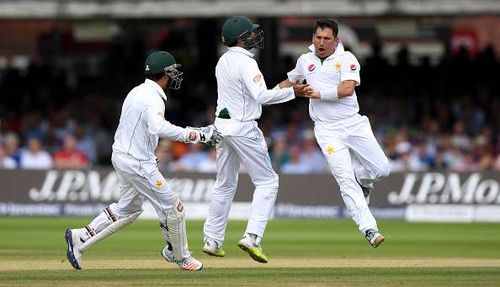
Decoding the Yasir Shah conundrum
Yasir Shah’s rise to the top of the cricket pyramid is one more addition to Pakistan cricket’s rags to riches story. Swabi, a little known place in Pakistan’s Pakhtunkhwa region has little to boast of cricket infrastructure, yet, the emergence of Shah, who masters leg-break bowling - considered by many as cricket’s most difficult art – is a case in study.
The leg spinner shot to prominence when Pakistani cricket was in crisis owing to Saeed Ajmal's ban from international cricket, and was nothing short of a life line for the nation’s cricketing fortune. Shah made every opportunity count, ensuring that the vacuum created by Ajmal’s absence was minimal.
Pakistan has always fascinated the cricket world by producing some of the greats of the game and Shah pretty much followed his former bowling greats, which came in the form of Abdul Qadir and Mustaq Ahmed, as they mesmerised the world with their dying craft.
After the retirement of Aussie spin legend Shane Warne, there followed a period where leg-spin almost almost had little to show, but at 30 an energetic but humble Yasir Shah, the bane of England at Lord’s – had brought the art of leg-spin alive and kicking at the Mecca of cricket. Shah, unlike his predecessors, is more of a bowler who attacks the stumps and is more keen in trapping the batsmen right in front or hitting the timber. His career stats will tell you that more than 40 percent of his dismissals are either leg before the wicket or bowled and that for a leggie occupies a pretty large chunk of dismissals.
Coming of age at Lord’s
At Lord’s, Shah didn't put a foot wrong. For a leg-spinner the basics are to spin the leg-break, mix it up with the top-spinner and the odd googly, at times, or try and catch the batsmen napping by using the flipper. Shah displayed his full repertoire as a bowler by not only slowing things up and taking his own time in trying to bluff the Englishmen, but also used the crease to full effect.
Both Gary Ballance and Jonny Bairstow were beaten in trajectory even before the ball landed. Ballance played down the wrong line and Bairstow found his stumps knocked all over the place. In the second innings Ballance went way across to a ball that spun sharply from the rough, just to see his leg stump pegged back.
This time around, the leggie used the angle to his advantage by going wide of the crease, bowling around the wicket, which showed that he has a good head on his shoulders as well. So it wasn't much of a surprise to see him return with figures of 10 for 141 in the first test. Leg-spinner and test cricket - an ultimate cocktail!
Long walk back at Old Trafford
But what did surprise a lot of us, was his inability to make any inroads in the second Test that gave him figures of just 1 for 266. Peter Roebuck once famously said that cricket is a funny old game that makes you look like an emperor when you are barely a Prince. It would have been interesting to read Shah's mind after falling from a monumental high, where Lord’s once took him to.
But to be fair to Shah, he had very few things working for him at Old Trafford in the second Test match. This was the first time England captain Alastair Cook won the toss and elected to bat first after losing the toss in all three Test matches in UAE and also in the first Test in the on-going series. For the first time Shah was bowling on a pitch that had nothing on it, quite different to bowling second or fourth, with all the foot marks created by the bowler or the rough patches in and around the batsmen.
To add to that, there was this weight of expectations on his shoulders after the Lord’s performance and it can only get bigger once you don't start off well, which was the case here. There were times when he was rushing through his overs in his eagerness to do well, which can sometimes be your biggest enemy.
Pitch adding to his woes
The pitch at Old Trafford had a fair bit of bounce that, quite surprisingly, went against Shah as it took the leg before and bowled out of the equation. The length that he was bowling here, compared to Lords, was much shorter and therefore it just stood up, asking to be hit on a pitch that was batting friendly.
He bowled a lot slower at Lords and since he wasn’t picking up wickets, he kept firing it in at times, making it easier for the batsmen to negate the spin. There were too many loose balls on offer and there was no pressure built on the English batsmen that would force them to do anything silly or different.
Talking about the length, even at times when he hit the same spot as in Lord’s, it became a touch too short, due to the extra bounce that the pitch had to offer compared to the earlier venue which was slower and lower. It made things more difficult for the young leggie. The length should have been a lot fuller and by the the time he realised it, England were already cruising.
Credit should be given to the England players for neutralising Pakistan's main weapon and playing him cleverly. It would be a test of character for Shah in the third Test at Birmingham, to see if he can pull another one back for his team and whether or not he has it in him to bounce back.
Although Birmingham is traditionally a seamer-friendly track, Shah has all the goods to come back strong and if he is on song, England – given their record against any form of spin, specially leg-spin - may have some tough questions to answer.
If you are a fan of Pakistan cricket, you would hope that Shah’s show wasn’t just a one-off. Pakistan at the moment need a shining pole star to put the cricket-frenzy nation back on the road to glory.
